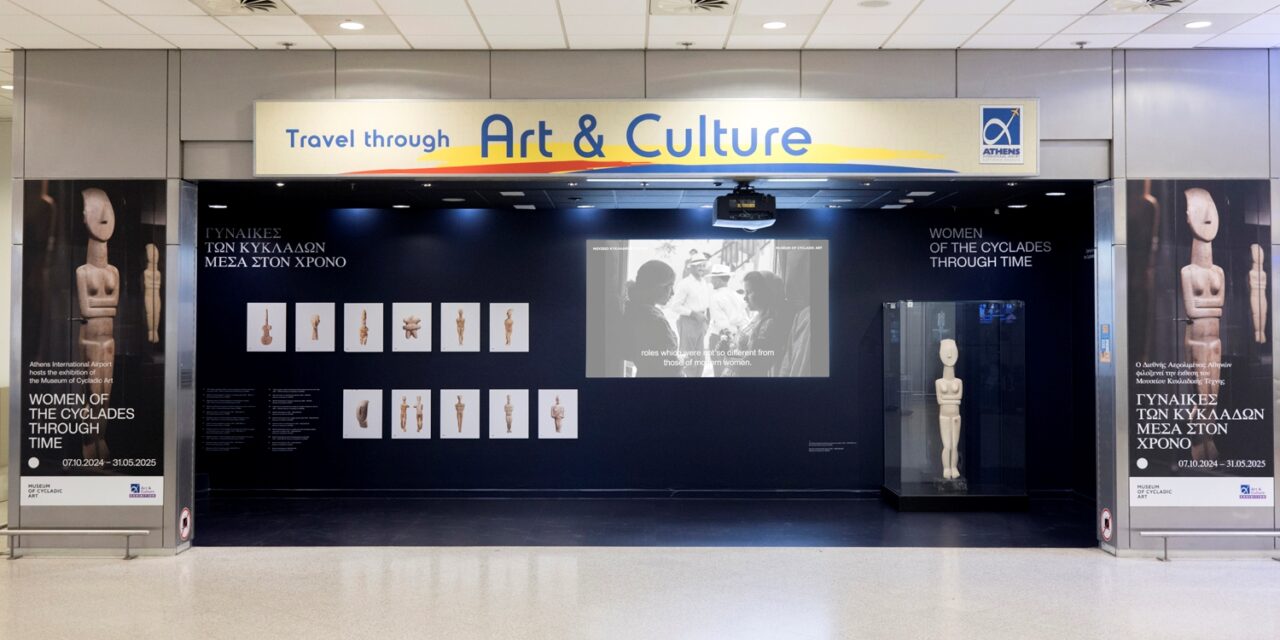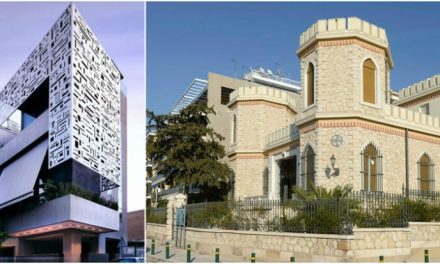Following 4 successful exhibitions, the Museum of Cycladic Art collaborates once again with the Athens International Airport by organizing the exhibition “Women of the Cyclades through time”. The exhibition, located in the “Art & Culture” area on the Arrivals level of Athens International Airport, opened on October 7, 2024, and will run until May 31, 2025.
The exhibition explores the history of the Cyclades, depicted through the marble female figurines crafted by local islanders during the 3rd millennium BC. These Cycladic figurines, part of the world-renowned collection of the Museum of Cycladic Art in Athens, reflect a society that revered women, representing the female form as a mother, goddess, offering, or ritual object of uncertain purpose. The white marble sculptures of the Early Cycladic period (3200–2000 BC) bring these figures to life, portraying women with prominent features, slightly rounded bellies, or incised lines indicating pregnancy or postpartum.
Since the early 20th century, artists like Brancusi, Modigliani, Archipenko, Moore, Giacometti, and Hepworth have been inspired by the simplicity of prehistoric Cycladic art. They were particularly drawn to the depiction of the female form, which became a universal archetype and a lasting influence on modern art.
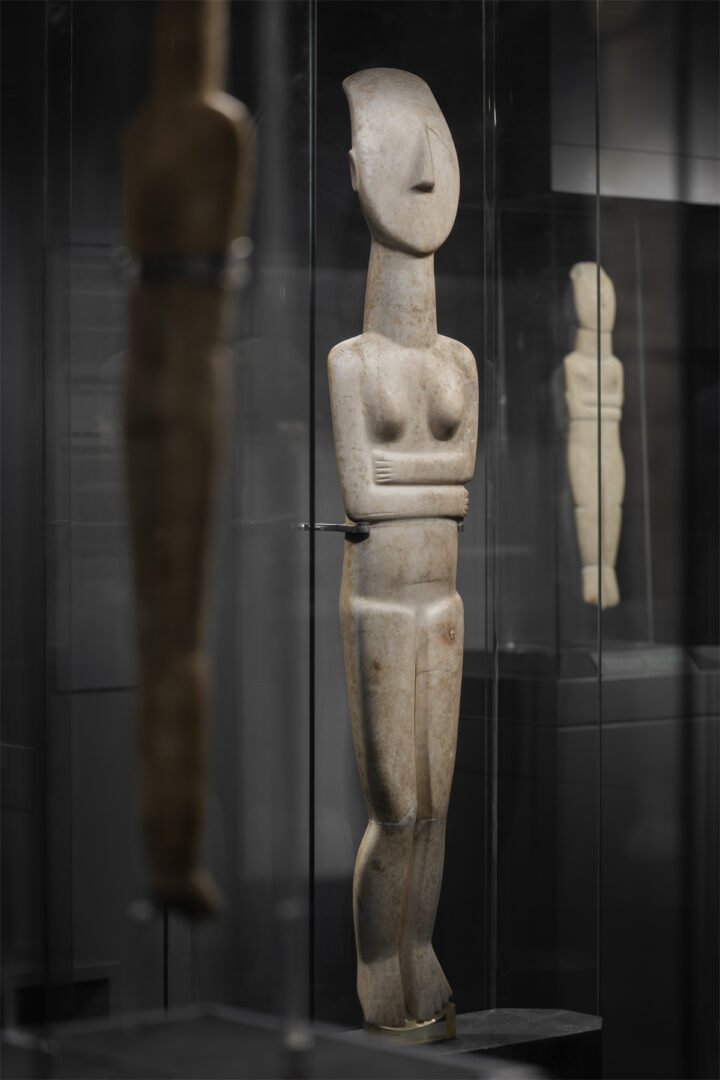
Marble female statue, 2700 – 2400/2300 BC © Museum of Cycladic Art, photo: Paris Tavitian
The central exhibit of the exhibition is a copy of the large Cycladic figurine of the Museum of Cycladic Art, believed to represent a female deity embodying the essence of her era’s art. The exhibition also features a video that showcases the lives of Cycladic women from ancient times to the present, offering insights into a culture both distant and remarkably familiar.
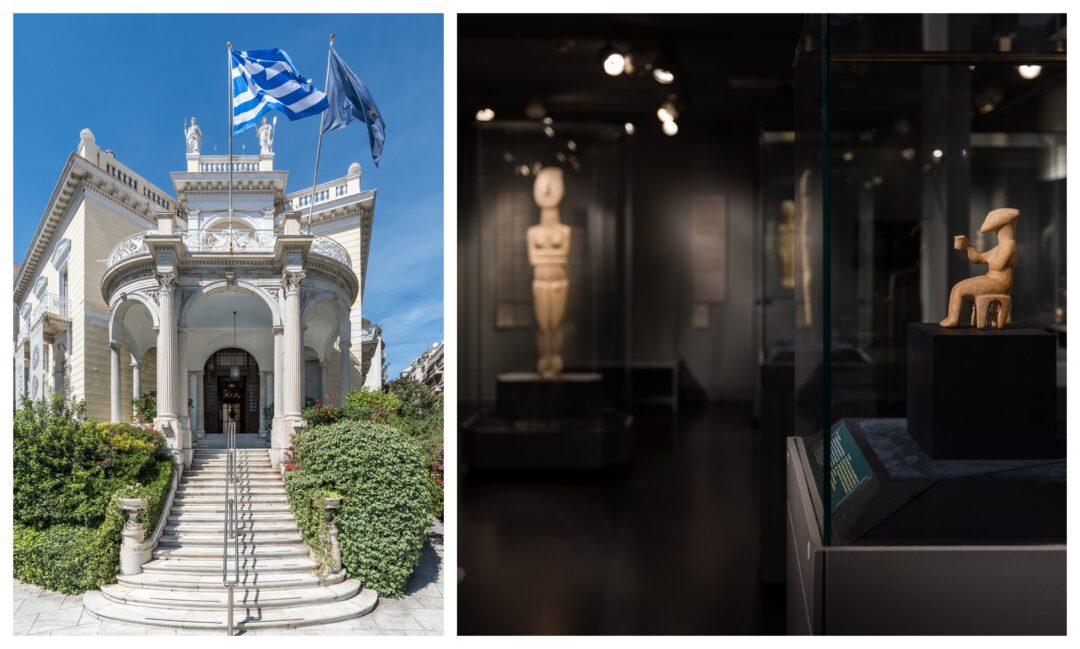
Museum of Cycladic Art – The Stathatos Mansion – photos: Paris Tavitian © Museum of Cycladic Art
“Women of the Cyclades through time” at the Athens International Airport serves as a prelude to the major archaeological exhibition titled “Kykladitisses: Untold Stories of Women in the Cyclades”. This exhibition, organized by the Museum of Cycladic Art in collaboration with the Ministry of Culture and the Ephorate of Antiquities of the Cyclades, will be held at the Museum of Cycladic Art (The Stathatos Mansion) from December 12, 2024, to May 4, 2025. It will feature around 180 artworks dating from early prehistory to the 17th century. Following this, the exhibition will be transferred to the Archaeological Museum of Thera (Santorini) in June 2025, where it will be displayed under the same form.
The exhibition is curated by Dr Dimitris Athanasoulis, Director of the Ephorate of Antiquities of the Cyclades, and the Scientific Directors of the Museum of Cycladic Art, Dr Panagiotis Iossif, Professor at Radboud University in the Netherlands, and Dr Ioannis Fappas, Assistant Professor of Prehistoric Archaeology at the Aristotle University of Thessaloniki.
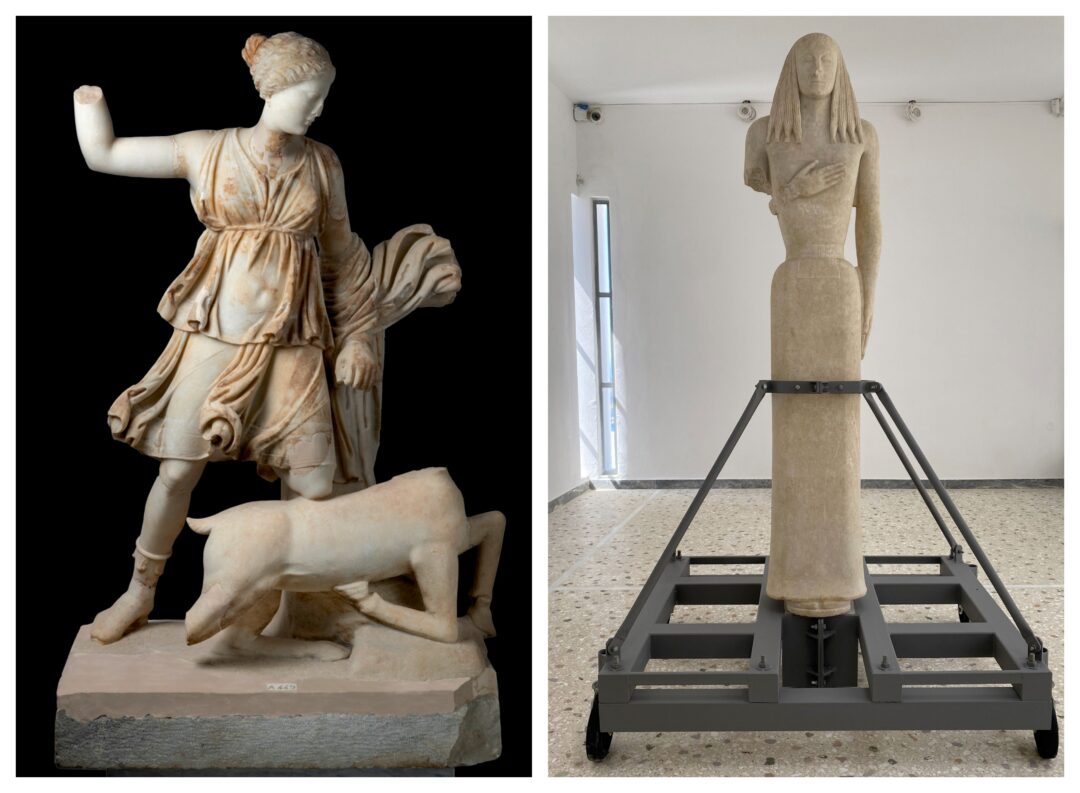
Left: Marble statue of Artemis Elaphebolos (killing a deer), Late Hellenistic period, Archaeological Museum of Delos © Hellenic Ministry of Culture, photo: Andreas Santrouzanos
Right: Archaic Kore of Thera, 7th century BC, photo from a temporary exhibition at the Archaeological Museum of Thera, September 2022 © Hellenic Ministry of Culture
The exhibition features exceptional pieces from the Ephorate of Antiquities of the Cyclades and the Museum of Cycladic Art, many of which have never been displayed outside the Cyclades or the Museum. It also includes select antiquities from the National Archaeological Museum, the Canellopoulos Museum, the Epigraphic Museum of Athens, and significant private collections. Among others, the Archaic Kore of Thera and an Hellenistic statue of Artemis from Delos.
The artefacts narrate the islands’ history through the perspective of its female inhabitants, focusing on the evolving roles of women throughout time. It delves into the transformations of women’s societal roles—from deities to mothers and the other way around—and highlights their participation in religious ceremonies and their presence in both public and private life. The exhibition also explores the boundaries of female roles within the community and offers glimpses into the ongoing process of female emancipation.
At a time when women continue to assert their identities, challenge gender roles, and dismantle long-standing stereotypes, this exhibition sheds light on untold stories from the Cycladic world that emphasize the historical journey of women’s identity formation from prehistory to the post-Byzantine period.
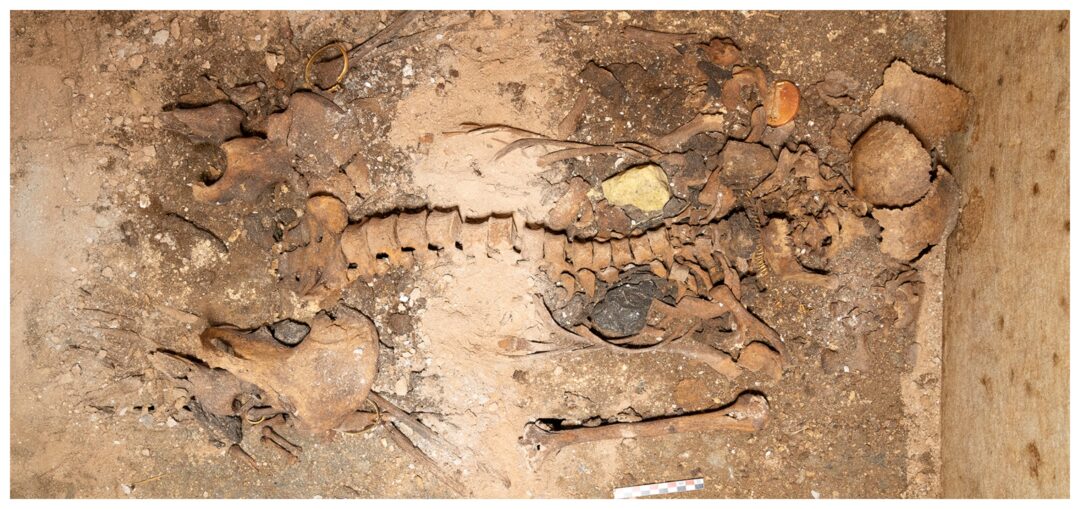

The tomb of “Neiko” and Episkopi monument on Sikinos – Photos © Ministry of Culture
The famous female burial of “Neiko” from the 2nd-3rd century AD will also be featured in the exhibition. Discovered in 2018 at the Episkopi site on the island of Sikinos, Neiko’s tomb contained rich offerings and jewels, indicating her prominent status. Dr. Dimitris Athanasoulis, director of the Ephorate of Antiquities of the Cyclades, stated in the Kathimerini newspaper, that while the original plan focused on the tomb’s grave goods, the inclusion of the skeleton itself is essential for a more complete presentation, as it holds significant information. The burial, marked by intentional bone fractures and bound hands and feet, suggests the woman was believed to be demon-possessed, possibly due to epilepsy, leading to what’s called a “divergent burial.” The skeleton has since been carefully preserved in a conservation lab and will be displayed in the exhibition as found, in a special showcase (Source: Kathimerini).
The Monument of Episkopi, a Roman mausoleum dating back to the 3rd century, converted to a Byzantine church on Sikinos, was among the winners of the 2022 European Heritage Awards. The high-quality restoration project “combined meticulous research with cautious conservation”.
I.A.
TAGS: CYCLADIC | EXHIBITION | WOMEN

